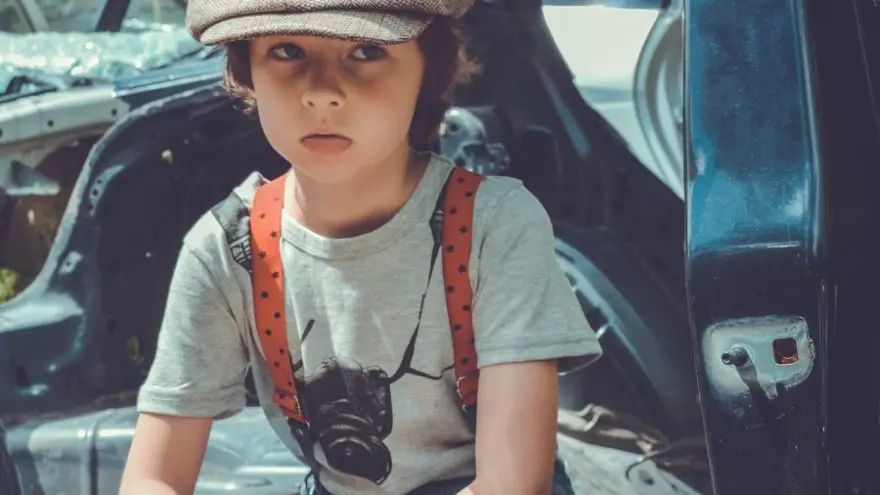Should we Teach our Children to Fight back?

There’s always going to be a strong chance that your child is going to come up against a bully. Bullies thrive on terrorizing younger children and this can start as young as kindergarten. Most bullies may have learned this behavior at home and bring it to school because they can’t protect themselves against an older adult or sibling who is constantly torturing them on a daily basis. Years ago parents would come home from work and many had a few beers or cocktails to end their workday. This may have brought out the frustration and anger they were feeling because they were raising their families and many women stayed home and didn’t work. The older adults took their anger out on their families and the kids brought their anger to schools. When your child comes home and is scared because they seem to be pushed around, what do you do? Do you think they should turn the other cheek or hit the bully back?
You can choose to have a meeting with your child’s teacher and principal and ask their advice. The answer is most likely going to be a “no” that your child should not start swinging. There is a reason for this psychology. When students start hitting other students back, this could lead to more children fighting and someone could be critically injured. Schools are responsible for keeping their students safe, and teachers can’t justify hitting other students back to parents. No one wants to see anyone gets hurt even if the child accidentally falls and breaks their leg without a violent confrontation. What are kids supposed to do that are being bullied and hit? Many schools don’t get involved and stop the bully.
The majority of kids are in favor of not creating a violent situation at school, but some do believe that striking back might be the right idea to stop the child from being a violent bully. Parents also become angry and tell their children to strike back and teachers have been known to tell their own children to use force on bullies who are hitting them to stop them and show them they are not afraid. Adults and children both have a vindictive streak within them because of peer pressure and their own pride. Self-defense was always accepted for years in our society but the problem is you have to prove you had a reason for this behavior. In many cases, the other party is injured and the law may become involved and consequences are going to occur if self-defense is not a proven fact with the situation.
Schools have policies that may be vague when it comes to striking one another so there are some rules in place if these occurrences happen on school grounds. There usually are suspensions and if the occurrence is violent enough, there could be an expulsion if a weapon is used or carried onto school grounds. A knife is not acceptable or anything else that could harm students or faculty including mace, and guns. Most students could receive a felony for carrying a weapon so don’t encourage your child to carry a weapon to school or any other events.
In general, boys seemed to have to face more challenges when it comes to fighting back or being the bully. Parents seem to tell their sons that this is genuinely accepted more if a boy fights back or stands up for himself if someone starts bullying him. In addition, there are teachers who also feel that their sons should fight back because this might stop the person who is continually assaulting them either physically or verbally. There are pros and cons that suggest that striking back can stop another episode of someone or the same kid bullying them. There are also children that are younger that are more passive and wouldn’t harm an ant so their chances of being bullied are much higher than a child who is more aggressive. The child who is passive will most likely experience more bullying unless they learn how to diffuse the situation without physical use of their limbs. This is not easy for kids that just want to go to school to learn when there is a bully that constantly picks on certain students.
Types of children
There are two types of children that seem to be bullied more and it doesn’t stop for them. The passive children are shy, unsure of themselves, have anxiety and don’t strike back. The bully feeds on the passive child because they know that this child won’t do anything to defend themselves. This type of child ends of provoking the bully to the point that there won’t be a conflict resolution anytime soon. This becomes a never-ending cycle of bullying and conflict events and both are set on being vindictive. These two types of children are both victims in a different way. The battle never ends and they both become overly emotional and don’t know how to control their behaviors towards one another. There is another theory that suggests whether striking back will start or stop another round of aggressive behavior. This time of thinking can either be effective or ineffective. It depends on the child and if they can talk out their issues and be mature about the situation.
 Some of these kids do end up losing because of the emotional issues that they can’t control. When other bullies see this they keep striking back on these kids because they know they have control over their emotions. The other type of child who strikes immediately because they want to win never really were bullied. They are great at manipulating their way through the system and getting what they want quickly and easily. There are many kids that don’t bully and get along with other kids but do stand up for themselves if an aggressive child confronts them.
Some of these kids do end up losing because of the emotional issues that they can’t control. When other bullies see this they keep striking back on these kids because they know they have control over their emotions. The other type of child who strikes immediately because they want to win never really were bullied. They are great at manipulating their way through the system and getting what they want quickly and easily. There are many kids that don’t bully and get along with other kids but do stand up for themselves if an aggressive child confronts them.
Schools are there to protect your children so they also must be able to work with the students that are being bullied and understand and be aware that this is an issue for your child. There are many ideas that both parent and their kids can do to stop these attacks. Parents have to learn that from birth your child needs your tender loving care because this will help your child be at low risk for either bullying or being bullied at school. It’s always important to encourage your child to choose good friends who are not fond of bullying at school. Parents should be aware of who their children are associating with and help them to ignore any type of bullying behavior from kids at school.
If a student starts poking at your child, it might be wise to teach them to say stop, set boundaries and if need be block the poking behavior. This doesn’t have to be violent. Boys are more likely to want to wrestle but this could become violent behavior and someone could become injured. It all depends if one is holding a grudge or is jealous of a past event. Boys tend to misunderstand the limits of other boys and think their behavior is aggressive when it’s not. Boys have to learn how to understand their peers and set boundaries for any physical activities they want to participate in. This is a good habit for boys to learn so things don’t escalate into a violent situation that becomes dangerous for all. Certain sports set limits on contact sports. These rules are written clearly for boys to understand so they can learn how to play with confidence and use their mind wisely, and respond to quick thinking if a physical altercation occurs in the game.
Schools are supposed to keep kids safe from any kind of harm, but there are always incidences that can’t be controlled by the staff. Therefore there are still situations when students end up fighting. Kids have to learn how to stay away from these occurrences and understand when something dangerous is about to happen. Parents are the ones who should help their children learn how to diffuse tough situations and walk away from them. Soft-spoken words and control of body language are important in diffusing risky occurrences. Most kids don’t want to be involved in a physical altercation but if they happen to be in the middle of a situation, they can use the other skills they have learned to control the occurrence with great confidence in themselves.






